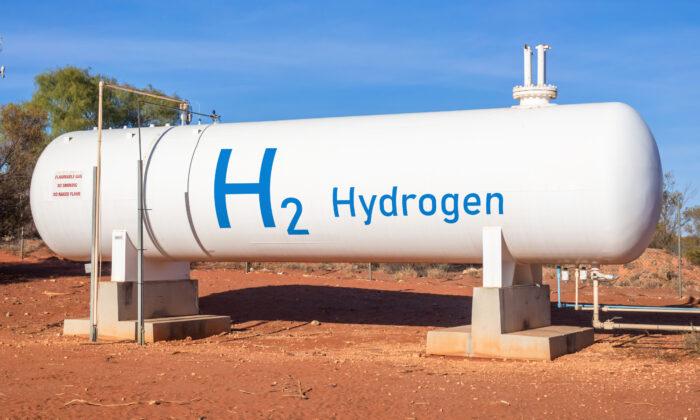The NSW government has released the design of the state’s first Hydrogen Centre of Excellence.
Taxpayers will contribute $25 million (US$16.5 million) to this project as part of an election commitment.
The state recently legislated net zero by 2050, a 50 percent cut to climate change emissions by 2030, and a 70 percent reduction by 2035.
The new hydrogen centre will train thousands of plumbers and gas fitters to prepare multi-skilled workers for the emerging hydrogen industry.
Designs include spacious workshops and classrooms where apprentices will receive hands on training with hydrogen equipment. This includes electrolysers, gas fitting techniques, and safety protocols.
Located in Glenwood, Western Sydney, the centre will employ 50 staff when operational. It will be owned and operated by the Plumbing Industry Climate Action Centre (PICAC).
During the construction phase, the centre is expected to employ at least 100 apprentices and create 500 construction jobs.
NSW Premier Chris Minns said the new centre would create thousands of jobs for the renewable energy transition.
“We are delivering on a key election promise to build a centre for the next generation of plumbers, equipping them with the skills they need to work with renewable energy technologies.”
The new hydrogen centre is expected to train and upskill 8,250 plumbers and gas fitters within the first five years of operating.
Skills, TAFE, and Tertiary Education Minister Steve Whan highlighted the collaboration between government, industry, and unions to build a skilled workforce.
“This initiative will be critical in ensuring current and future apprentices and those already in the industry receive the high-quality training they will need to meet future industry demands,” he said.
Environment Minister Penny Sharpe added: “This facility is crucial to ensuring the workers the renewable energy industry needs have the skills required to accelerate NSW’s shift towards clean technologies and net zero.
Net Zero Plans Face Challenges
The Minns government established the Net Zero Commission in December 2023 as part of the Climate Change (Net Zero Future) Act 2023.This followed the passage of the state’s ambitious climate change targets, which received support from the Opposition.
However, Libertarian Member of the Legislative Council John Ruddick said it was possibly the “most useless bill in recent history.”
“The goal of this allegedly ‘independent’ commission is to hold the government to account and ensure it reduces carbon dioxide emissions to 50 percent by 2030 and 100 percent by 2050.”
Criticising the bill and other similar legislation, he said regular working families and small businesses suffered from increasing energy bills while “green elites” made huge profits.
According projections based on figures from 2022 and 2023, the state will deliver a 44 percent to 50 percent reduction on 2005 levels in 2030, and 65 percent to 70 percent by 2035.
This prompted the NSW government to admit the challenges it faces with reaching its targets, prompting a suite of further measures.
“These figures from late 2023 show the extent of the challenge we face to reach our 50 percent reduction target by 2030,” Ms. Sharpe said in April.
“The NSW government is determined to meet the legislated targets and is taking a range of actions to ensure New South Wales reaches those reduction milestones.”
Energy Bills at Risk
Meanwhile, a recent report (pdf) warned electricity bills in NSW could rise by $1,100 per year to pay for delays in transmission infrastructure upgrades.Small businesses could face bills of up to $7,716 a year, rising to $24,124 with a seven year delay to the transmission infrastructure build.
The report noted the transmission infrastructure is required as part of the transition to renewable energy, which will require new capacity.
“In order to connect the renewable generation and storage capacity required to replace ageing coal-fired power stations and transition to a clean energy power system, Australia needs to effectively plan and deliver thousands of kilometres of transmission lines in the next decade,” the document noted.







